 W
WThe National Parks Administration of Argentina is a public agency in charge of maintaining the network of national parks, created in 1934 to preserve the biological diversity and the cultural resources of the country. It is managed by the Ministry of Environment and Sustainable Development.
 W
WThe Baritú National Park is a national park in Argentina, located in the Santa Victoria Department, in the north of the province of Salta, in the Argentine Northwest. The park borders Bolivia, and its only road access is through that country. It has an area of 720 square kilometres (72,000 ha) and it is the only tropical park in Argentina.
 W
WThe Jaramillo Petrified Forest National Park is a protected area of petrified forest located in the Deseado Department, in the northeast of Santa Cruz Province, Argentina. Formerly part of the site was a natural monument, established in 1954 and known as the Petrified Forest Natural Monument, covering about 13,700 hectares. This area has remnants of a forest preserved in stone, that had been growing on the site before the upthrust of the Andes some 150 million years ago. In December 2012, further land was added and the protected area was reclassified as a national park with a total area of 78,543 hectares.
 W
WThe Calilegua National Park is a federal protected area in Jujuy Province, Argentina. Established on 19 July 1979, it houses a representative sample of the Southern Andean Yungas biodiversity in good state of conservation.
 W
WThe Campo de los Alisos National Park is a federal protected area in Tucumán Province, Argentina. Established on 9 August 1995, it houses a representative sample of the southern Yungas montane jungle biodiversity in good state of conservation.
 W
WCampos del Tuyú National Park is a national park in Buenos Aires Province, Argentina. Situated on the southern shore of Samborombón Bay, the park was established on May 13, 2009. The main attraction of Campos del Tuyú is the rare pampas deer; in fact, it is one of the few places in the Pampas where this species survive. Other inhabitants of the park include over a hundred bird species, capybara, and the likewise endangered Leopardus geoffroyi.
 W
WThe Chaco National Park is a national park of Argentina, located in the province of Chaco. It has an area of 150 km2. It was created in 1954 in order to protect a sample of the Eastern Chaco, composed mainly of warm lowlands, with an annual summer rainfall between 750 and 1,300 mm.
 W
WCopo National Park is a federal protected area in Santiago del Estero Province, Argentina. Established on 22 November 2000, it houses a representative sample of the Dry Chaco biodiversity in average state of conservation. Located in the Copo Department, it has an area of 118,118 ha.
 W
WEl Impenetrable National Park, Spanish: Parque Nacional El Impenetrable, is a national park in the Gran Chaco region of northern Argentina. It was established in 2014 on the lands of the former Estancia La Fidelidad, which were expropriated after the owner, Manuel Roseo, was murdered in 2011 in an attempt to gain control of the estate. The park opened to visitors in 2017. It is the largest natural park in northern Argentina, with a total area of approximately 128,000 hectares.
 W
WEl Palmar National Park is one of Argentina's national parks, located on the center-east of the province of Entre Ríos, midway between the cities of Colón (54 km) and Concordia (60 km). It has an area of about 85 km² and was created in 1966 for the preservation of its characteristic yatay palm trees.
 W
WThe El Rey National Park is a national park of Argentina, located in the Anta Department, province of Salta, in the Argentine Northwest, 80 km from the provincial capital. It has an area of 441.62 km².
 W
WErnesto Tornquist Provincial Park is a provincial protected area in the south of Buenos Aires Province, mid-eastern Argentina. Established on 23 April 1958, it covers a small area of the Ventania System.
 W
WIberá National Park is a national park in Argentina. It is located in central Corrientes Province. The park covers 1,381.4 km².
 W
WThe Iguazú National Park is a national park of Argentina, located in the Iguazú Department, in the north of the province of Misiones, Argentine Mesopotamia. It has an area of 677 km2 (261 sq mi).
 W
WIslas de Santa Fe National Park is a national park of Argentina. It is situated in San Jerónimo Department, Santa Fe, Argentina.It was established in 2010.
 W
WThe Lago Puelo National Park is a national park of Argentina, located in the northwest of the province of Chubut, in the Patagonia region of South America. It has an area of 276.74 square kilometres. It was created to protect its scenic landscape and the Valdivian flora to augment that of the nearby Los Alerces National Park. Originally an annex to Los Alerces, it was declared a National Park and independent reserve in 1971.
 W
WLaguna Blanca National Park is a National Park in the west of the province of Neuquén, Argentina, close to the town of Zapala.
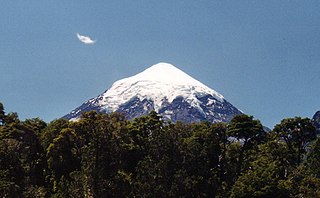 W
WLanín National Park is a national park of Argentina, located in the Neuquén Province, with forests of diverse tree varieties, mainly Fagaceae and conifers such as the lenga and the Araucaria, many species of which are not found elsewhere in Argentina.
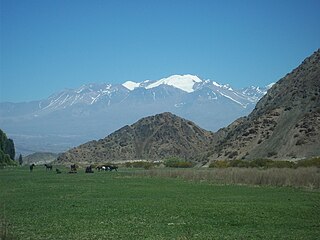 W
WEl Leoncito National Park is a federal protected area in San Juan Province, Argentina. Established on 18 September 2002, it houses a representative sample of the Central Andean Puna and the Southern Andean steppe biodiversity in good state of conservation, as well as historical and paleontological sites. It has an area of 89,706 ha
 W
WLihué Calel National Park is a national park in Argentina, located in the Lihue Calel Department, in the center of La Pampa Province. The area is one of mountain plains and plateuas, and is known for its grass tussocks. The park covers 324 square kilometres, and was established in 1977.
 W
WLos Alerces National Park is located in the Andes in Chubut Province in the Patagonian region of Argentina. Its western boundary coincides with the Chilean border. Successive glaciations have molded the landscape in the region creating spectacular features such as moraines, glacial cirques and clear-water lakes. The vegetation is dominated by dense temperate forests, which give way to alpine meadows higher up under the rocky Andean peaks. A highly distinctive and emblematic feature is its alerce forest; the globally threatened alerce tree is the second longest living tree species in the world. The alerce forests in the park are in an excellent state of conservation. The property is vital for the protection of some of the last portions of continuous Patagonian Forest in an almost pristine state and is the habitat for a number of endemic and threatened species of flora and fauna.
 W
WLos Arrayanes National Park is a national park of Argentina with an area of 17.53 square kilometres (6.77 sq mi). It covers the Quetrihué Peninsula on the shore of the Nahuel Huapi Lake in the province of Neuquén, 3 km (1.9 mi) from Villa la Angostura.
 W
WThe Los Cardones National Park is a national park of Argentina, located in the center-west of the province of Salta, within the San Carlos and Cachi Departments, in the Argentine Northwest.
 W
WLos Glaciares National Park is a federal protected area in Santa Cruz Province, Argentina.
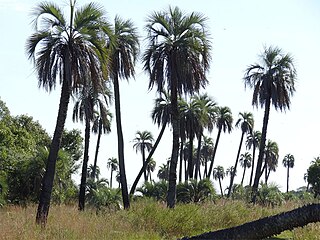 W
WMburucuyá National Park is a National park in Argentina. It is located in the north west of the Corrientes Province around 150 km from the city of Corrientes and covers an area of 176 square kilometres of the Iberá Wetlands.
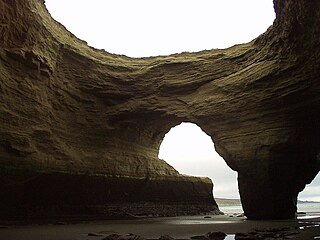 W
WMonte León National Park is a federal protected area in Santa Cruz Province, Argentina. Established on 20 October 2004, it houses a representative sample of the steppe and Patagonian coast biodiversity in good state of conservation, as well as several paleontological sites of high value. It runs along 36 km (22 mi) of the southern Argentine Sea coastline.
 W
WNahuel Huapi National Park is the oldest national park in Argentina, established in 1934. It surrounds Nahuel Huapi Lake in the foothills of the Patagonian Andes. The largest of the national parks in the region, it has an area of 7,050 km2 (2,720 sq mi), or nearly 2 million acres. Its landscapes represent the north Patagonian Andean Zone consisting of three types, namely, the Altoandino, the Andino-Patagónico and the Patagonian steppe. It also represents small parts of the Valdivian Rainforest.
 W
WPerito Moreno National Park is a national park in Argentina. It is located in the western region of Santa Cruz Province on the border with Chile. It has an area of 126,830 hectares of mountains and valleys at a height of 900 metres above sea level.
 W
WThe Predelta National Park is a national park of Argentina, located in south-west of the province of Entre Ríos, 6 km south from Diamante, in the Argentine Mesopotamia, at the beginning of the Paraná River Delta. The park was created on 13 January 1992 under the Law Nº 24.063, with an area 24.58 square kilometres to protect a sample of the Upper Delta of the Paraná, which belongs to the Paraná Delta and Islands Ecoregion. The Predelta is the area where the sediments of the Paraná start forming islands, while the river itself splits into several major arms and many smaller watercourses.
 W
WQuebrada del Condorito National Park is a federal protected area in Córdoba Province, Argentina. Established on 28 November 1996, it houses a representative sample of the Sierras Pampeanas biodiversity in endangered state of conservation. It has an area of 37,344 ha
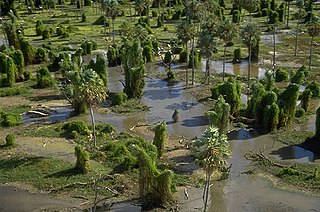 W
WThe Río Pilcomayo National Park is a national park located in the northeastern part of the Argentine province of Formosa, on the border with Paraguay. Established on September 29, 1951 to protect the natural features, typical of the Humid Chaco ecoregion, the park is included in the Ramsar Convention's list of wetlands of international importance.
 W
WSan Guillermo National Park is a national park in Argentina, in the Iglesia Department of San Juan Province. It was established in 1998 and is part of the San Guillermo Biosphere Reserve. Elevations in the biosphere range from 2,100 metres (6,900 ft) to 6,380 metres (20,930 ft). Vegetation in the National Park and biosphere consists of barren desert, grasslands, and a few wetlands, all located in the high, arid Andes. The animals include vicuña, guanaco, culpeo fox, Andean mountain cat, cougar, and Andean condor.
 W
WThe Sierra de las Quijadas National Park is a national park located in the northwestern part of the Argentine province of San Luis. It was established on December 10, 1991, to protect the natural features, representative of the Semiarid Chaco and the Argentine Low Monte ecoregions.
 W
WTalampaya National Park is a national park located in the east/centre of La Rioja Province, Argentina. It was designated a provincial reserve in 1975, a national park in 1997, and a UNESCO World Heritage Site in 2000.
 W
WTierra del Fuego National Park is a national park on the Argentine part of the island of Tierra del Fuego, within Tierra del Fuego Province in the ecoregion of Patagonic Forest and Altos Andes, a part of the subantarctic forest. Established on 15 October 1960 under the Law 15.554 and expanded in 1966, it was the first shoreline national park to be established in Argentina.